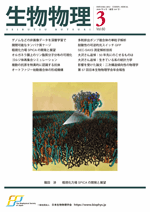
- |<
- <
- 1
- >
- >|
-
神田 大輔2020 年 60 巻 3 号 p. 145
発行日: 2020年
公開日: 2020/05/27
ジャーナル フリーPDF形式でダウンロード (518K)
-
角田 達彦2020 年 60 巻 3 号 p. 149-152
発行日: 2020年
公開日: 2020/05/27
ジャーナル フリーAlthough one would expect to use genomic data to discriminate diseases/phenotypes, this is a complex and hard task as key information to achieve it is spread over high-dimensional spaces. To address this issue, we envisaged that clustering similar variables, e.g. genes, would facilitate the identification of such information. Thus, here we have developed DeepInsight, a method comprising three steps: rearrange variables, extract features, and construct a classification model. Non-image data are transformed into image data allowing us to apply and take advantage of the learning capabilities of Convolutional Neural Networks (CNNs). Our experiments showed that with real data, such as cancer transcriptome, DeepInsight achieved much higher accuracy than typical machine learning methods. Our methodology has the potential to contribute to various biomedical applications and improve feature and structure extraction in non-image data.
抄録全体を表示PDF形式でダウンロード (1595K) -
岩崎 憲治, 宮崎 直幸2020 年 60 巻 3 号 p. 153-156
発行日: 2020年
公開日: 2020/05/27
ジャーナル フリーAn ultra-stable artificial protein cage was created by using TRAP (trp RNA-binding attenuation protein). Adding a gold (I) triphenylphosphine compound to a cysteine-substituted TRAP generated a cage 22 nm in diameter. The TRAP cage resisted severe conditions, such as high temperature, denaturing agents, and acidic and basic solvents. However, it was instantly disassembled when reducing agents were added to the solution. We can therefore fully control both assembly and disassembly of the TRAP cage. Cryo-EM single-particle analysis revealed a chiral pair of TRAP cages and their atomic structures, in which gold atoms acted as staples to connect the TRAP rings.
抄録全体を表示PDF形式でダウンロード (3851K) -
篠田 渉2020 年 60 巻 3 号 p. 157-161
発行日: 2020年
公開日: 2020/05/27
ジャーナル フリーWe illustrate a series of molecular dynamics simulations of lipid membranes using the coarse-grained model, SPICA force field. The force field was designed to reproduce the experimental thermodynamic quantities such as surface tension, density, and solvation free energy, and simultaneously the molecular distribution functions calculated from all-atom molecular simulations. Further, the elastic properties and line tension of lipid membranes are well reproduced, which guarantees a reasonable morphology of lipid aggregates. The molecular library now includes several different lipids as well as cholesterols. Large scale simulations and free energy calculations are described to show the performance of the SPICA force field.
抄録全体を表示PDF形式でダウンロード (4458K)
-
辻 琢磨, 藤本 豊士2020 年 60 巻 3 号 p. 162-164
発行日: 2020年
公開日: 2020/05/27
ジャーナル フリーPDF形式でダウンロード (2482K) -
立川 正志2020 年 60 巻 3 号 p. 165-167
発行日: 2020年
公開日: 2020/05/27
ジャーナル フリーPDF形式でダウンロード (3218K) -
鎌足 雄司2020 年 60 巻 3 号 p. 168-170
発行日: 2020年
公開日: 2020/05/27
ジャーナル フリーPDF形式でダウンロード (2400K) -
藤岡 優子, 野田 展生2020 年 60 巻 3 号 p. 171-173
発行日: 2020年
公開日: 2020/05/27
ジャーナル フリーPDF形式でダウンロード (2216K)
-
堤 研太2020 年 60 巻 3 号 p. 174-175
発行日: 2020年
公開日: 2020/05/27
ジャーナル フリーPDF形式でダウンロード (1310K) -
篠田 肇2020 年 60 巻 3 号 p. 176-177
発行日: 2020年
公開日: 2020/05/27
ジャーナル フリーPDF形式でダウンロード (1522K)
-
米澤 健人, 清水 伸隆2020 年 60 巻 3 号 p. 180-184
発行日: 2020年
公開日: 2020/05/27
ジャーナル フリーPDF形式でダウンロード (2548K)
-
冨樫 祐一2020 年 60 巻 3 号 p. 185-187
発行日: 2020年
公開日: 2020/05/27
ジャーナル フリーPDF形式でダウンロード (1130K) -
岡田 康志2020 年 60 巻 3 号 p. 188-189
発行日: 2020年
公開日: 2020/05/27
ジャーナル フリーPDF形式でダウンロード (739K) -
中村 春木2020 年 60 巻 3 号 p. 190-191
発行日: 2020年
公開日: 2020/05/27
ジャーナル フリーPDF形式でダウンロード (1031K) -
永井 健治2020 年 60 巻 3 号 p. 192-193
発行日: 2020年
公開日: 2020/05/27
ジャーナル フリーPDF形式でダウンロード (4770K)
-
~共用基盤としてのSPring-8/SACLA~山本 雅貴2020 年 60 巻 3 号 p. 194-195
発行日: 2020年
公開日: 2020/05/27
ジャーナル フリーPDF形式でダウンロード (1847K)
-
第60回生物物理若手の会 夏の学校のご案内 ~北海道支部開催~石坂 優人2020 年 60 巻 3 号 p. 196-197
発行日: 2020年
公開日: 2020/05/27
ジャーナル フリーPDF形式でダウンロード (1704K)
-
~Luck and Pluck~石上 泉2020 年 60 巻 3 号 p. 198-199
発行日: 2020年
公開日: 2020/05/27
ジャーナル フリーPDF形式でダウンロード (1350K)
-
2020 年 60 巻 3 号 p. 178-179
発行日: 2020年
公開日: 2020/05/27
ジャーナル フリーPDF形式でダウンロード (498K)
- |<
- <
- 1
- >
- >|